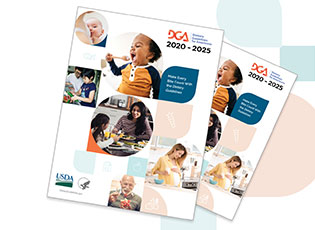January 5, 2021
Rice Takeaways from the 2020-2025 Dietary Guidelines for Americans
 The U.S. Departments of Agriculture (USDA) and Health and Human Services (HHS) have recently published the 2020-2025 Dietary Guidelines for Americans, and, they are generally positive for rice with grains recommended at all life stages.
The U.S. Departments of Agriculture (USDA) and Health and Human Services (HHS) have recently published the 2020-2025 Dietary Guidelines for Americans, and, they are generally positive for rice with grains recommended at all life stages. The guidelines are published every five years and serves as the foundation for all federal nutrition policy and nutrition education guidelines, and provides official science-based recommendations on what Americans should eat and drink to promote health, help reduce risk of chronic disease, and meet nutrient needs.
For rice and grains, most of the 2020-2025 recommendations either remained consistent with the 2015-2020 recommendations or enhanced and updated them.
Significant new recommendations include the recognition of whole grains as “one of the three food groups that are fundamental constituents of a healthy dietary pattern,” and, for the first time, dietary recommendations that advocate for infant rice cereal consumption and enriched grain consumption for women who are pregnant and/or lactating. The dietary guidelines also maintained the existing recommendation of six one-ounce servings of grain foods daily, with half of those servings coming from whole grains.
The guidelines touted the key role both enriched and whole grain rice plays in healthy dietary patterns and diet quality, and identified whole grains as a significant contributor to dietary fiber (considered an under-consumed nutrient among Americans). The report emphasized that grains are a delicious, versatile, affordable, and sustainable plant-based food, and that enrichment and fortification of grains are key contributors to positive public health.
Overall, the new 2020-2025 guidelines clearly advocate for the importance of both enriched and whole grain rice in maintaining healthy dietary patterns at all life stages
Go here to view the complete 2020-2025 Dietary Guidelines for Americans.
-

Arugula and Rice Salad
-

Herby Rice Salad with Market Vegetables
-

Teriyaki Chicken and Edamame Rice Bowls
